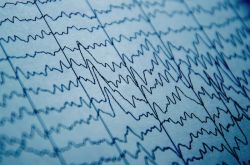The brain works like an orchestra—not a solo instrument. When multiple senses are harmonized, the brain calms, focuses, and regenerates more effectively. This article explains why multisensory stimulation is key to nervous system regulation—especially for neurodivergent individuals.
Why is it important to stimulate multiple senses at once?
The brain is evolutionarily designed to process information from multiple senses simultaneously. This ability—known as multisensory integration—helps the body and mind respond quickly to stimuli and form a coherent picture of the world. Research shows that combining sensory inputs (e.g., sound + touch + visual stimulation) enhances learning, supports neuroplasticity, and promotes autonomic nervous system regulation.
This is particularly helpful for neurodivergent individuals, such as those with ADHD, autism, or trauma histories, where carefully tuned multisensory input can bring calm, balance, and a sense of safety.
How does the brain process sensory input?
Sensory information is not processed in isolation. For example, the thalamus—the brain’s central relay station—integrates signals from vision, hearing, and touch and forwards them to other brain regions. The limbic system assigns emotional value to stimuli, while the prefrontal cortex determines behavioral response.
When sensory inputs are synchronized (e.g., soothing music + warm light + pleasant scent), the parasympathetic nervous system—the state of rest, digestion, and healing—is more easily activated. This allows the brain to recover more effectively from stress and overload.
Polyvagal Theory: The science of calming the nervous system
According to Polyvagal Theory (Stephen Porges), a key player in nervous system regulation is the vagus nerve. Its branches influence two core states:
- Ventral vagal (social engagement): linked with calm, connection, and trust.
- Dorsal vagal (shutdown response): activated in states of fear, anxiety, or freeze.
Multisensory stimulation can activate the ventral vagal system through:
- music that enhances heart rhythm coherence,
- soft lighting that soothes the visual system,
- aromas (e.g., lavender, sandalwood) that directly influence the limbic system,
- gentle vibration or pressure that restores body boundaries.
When these are combined, the result is a state of deep calm—where the body is relaxed and the mind remains alert and ready
for recovery.
Multisensory therapy in practice
Multisensory approaches were originally developed for children with severe disabilities (e.g., Snoezelen rooms). Today, they’re increasingly recognized as powerful tools in adult neurorehabilitation, mental health care, and burnout recovery.
Benefits include:
- improved sensory regulation and emotional resilience,
- enhanced mindfulness and presence,
- activation of internal coping resources,
- reduction in anxiety, overwhelm, and insomnia.
Key to success is that stimulation should never overwhelm. Less is often more. Individualized pacing and a safe space are essential.
Multisensory therapy at Light Brains
At Light Brains, we design spaces that blend scientific insight with sensitivity. Our multisensory therapy is built around the synergy of:
- Photobiomodulation: red and infrared light therapy to stimulate mitochondria and support neuronal recovery.
- Sound therapy: binaural beats or calming frequencies (e.g., 432 Hz) to synchronize brain waves.
- Aromatherapy: natural essential oils chosen for their neurological effects and adjusted for client sensitivity.
- Vibrational input: gentle resonance applied to the body to support grounding and body awareness.
- Safe environment: soft lighting, minimal noise, and a clutter-free space without unpredictable stimuli.
Each session is adapted to the client’s current state. We use self-assessment tools and live observation to fine-tune sensory input.
Why is this approach effective for neurodivergent clients?
Neurodivergent individuals often experience sensory overload, have different perception thresholds, or struggle to regulate stress. Talk-based therapies may not always meet their needs.
The multisensory approach:
- requires no verbal communication,
- offers an immediate felt sense of safety,
- can be adapted in real time,
- respects the individual’s neuroprofile.
It allows the client to reconnect with themselves, restore body awareness, and experience the sensory world as supportive—not threatening.
Summary
Multisensory integration isn’t just a trend—it’s a return to nature. The brain has always been wired to respond to the world as a whole, not in isolated sensory channels. Thoughtfully designed multisensory stimulation calms the brain, promotes harmony, and supports recovery.
At Light Brains, we honor this natural intelligence of body and brain, grounded in the latest neuroscience. Because balance begins with connection.
Sources and Further Reading
- Porges, S. W. (2011). The Polyvagal Theory: Neurophysiological Foundations of Emotions, Attachment, Communication, and Self-regulation. → Foundational work on how vagus nerve activity shapes emotional regulation and social engagement.
- Shams, L., & Seitz, A. R. (2008). Benefits of multisensory learning. Trends in Cognitive Sciences, 12(11), 411–417. → Review of how integrating sensory inputs enhances learning and neural plasticity.
- Cabral, D. A., et al. (2022). Multisensory stimulation and relaxation for patients with chronic stress: a systematic review. Frontiers in Psychology. → A systematic review showing how multisensory approaches support stress reduction and parasympathetic activity.
- van Dijk, M. L., et al. (2020). Snoezelen for adults with intellectual disabilities: An overview of evidence and practice. Journal of Applied Research in Intellectual Disabilities. → Research on Snoezelen environments as therapeutic tools for neurodevelopmental conditions.





